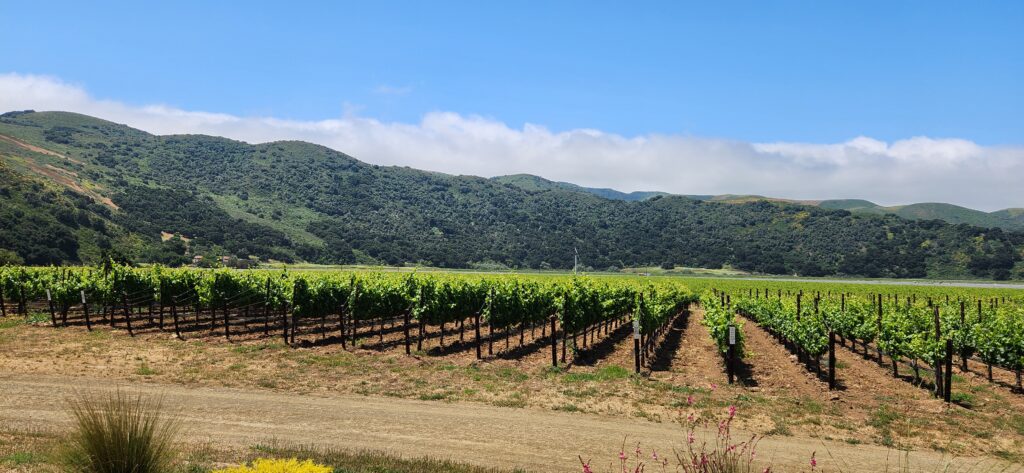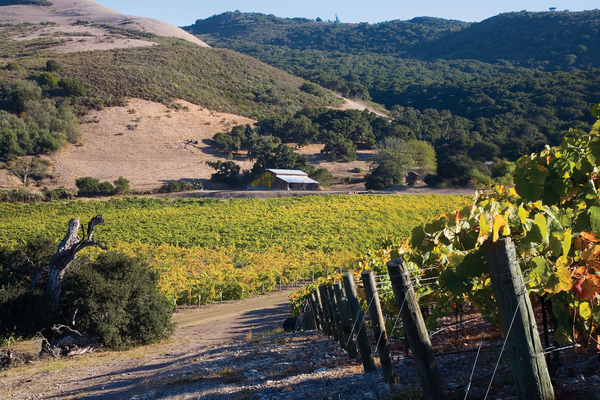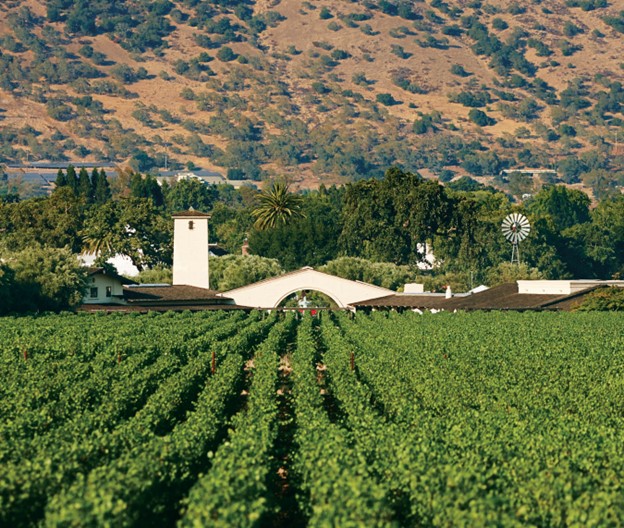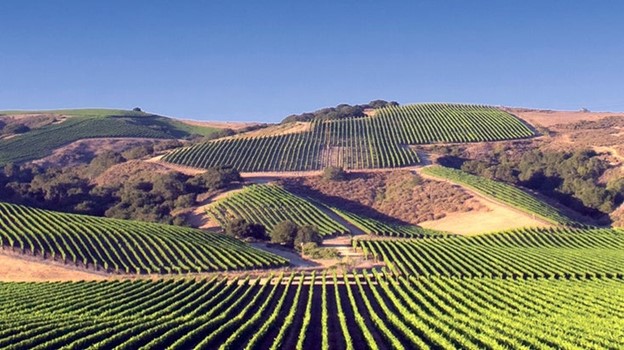Several years ago, Power Tasting published a review of the Sanford tasting room in Santa Barbara. That space now hosts other vineyards, but interested wine lovers can still visit Sanford (www.sanfordwinery.com) at their facility in the Santa Rita Hills. It’s a drive of an hour or so outside of Santa Barbara, and it’s a trip worth taking. [Elsewhere in this issue we discuss the attraction of the locale; here we’ll focus on the winery.]
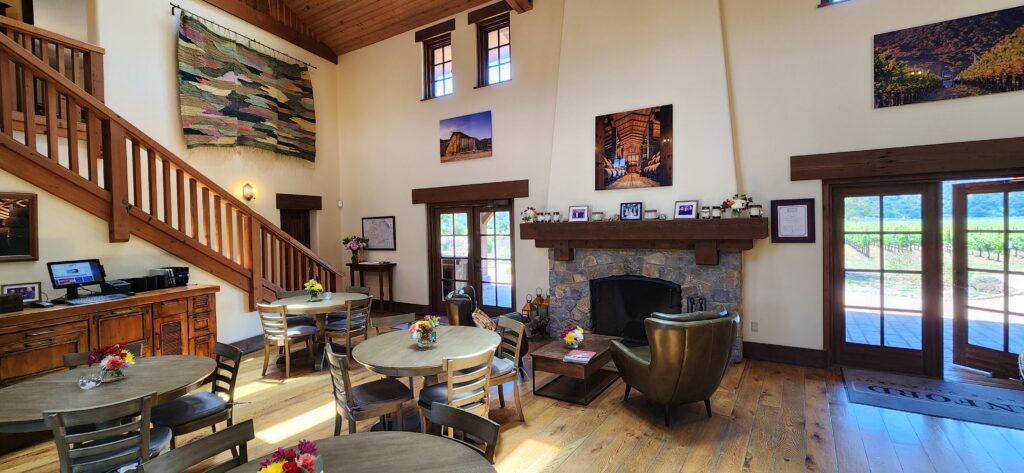
The interior of the Sanford winery, with doors leading to the vineyards and outdoor tastings.
When you get off the road at Sanford, you’re immediately surrounded by grape vines. You are, in fact, in the midst of the Rinaconda vineyard and some of the wines you are about to taste were made from the same vines, just a few years prior. That sense of being surrounded by great grapes stays with you throughout the visit.
The winery and its tasting room are housed in a handsome adobe brick building, with Spanish roof tiles. It looks very much like a hacienda, an impression that is reinforced inside, with Southwestern décor. It evokes the missions that once dotted California in its colonial times. We suppose there are tastings in there on rainy or cold days, but if you can, have your tasting outside.
As we said before, Santa Rita Hills is a trip worth taking.
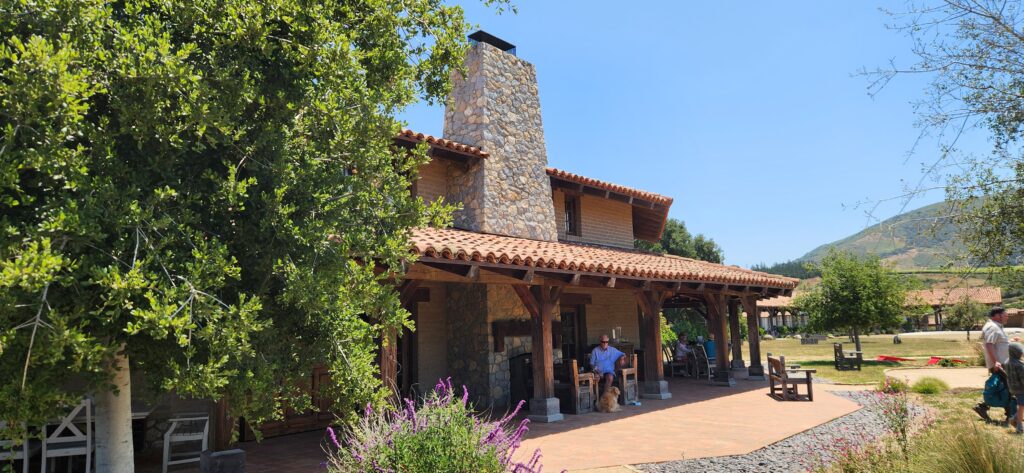
A capella tasting, at the “hacienda”
Visitors are seated at comfortable tables, spaced widely enough that you have the sense that you are the only ones there to taste Sanford’s wines. The pleasure is doubled by the vista, all the way to the horizon, of vines. Make that tripled pleasure, because the tables are placed within gardens of blooms and desert plants.
The server explains the history of the Sanford winery, which in brief is the history of wine production in the Santa Rita Hills. Richard Sanford and Michael Benedict planted the first vines there in 1971. Their first vineyard, called Sanford-Benedict naturally enough, was and is the most prestigious in the region. Today, Sanford is owned by the Terlato family, who also have several other top wineries in California.
And then the wines. They make Pinot Noirs and Chardonnays. Unusually, they serve the reds before the whites. When we questioned this practice, the server acknowledged that this is not the way others do it, but that the winery believes that the high level of acidity in the Chardonnays would affect the taste of the Pinot Noirs if served first.
The standard tasting menu includes their top single-vineyard wines, including the aforementioned Sanford & Benedict and the Rinaconda. The former is emblematic of Santa Rita Hills wine; the latter is somewhat richer, to our tastes. Also to our tastes, Sanford’s Pinot Noirs are among the most Burgundian of American wines made from that grape.
The servers are generous with their pour, which leads to a dilemma. Yes, there’s a bucket, but the wines are so good that we didn’t want to pour anything out. Still, we had to be aware that there would be driving ahead of us. As dilemmas go, this wasn’t a bad one. WE savored the wines but responsibly left some behind.
